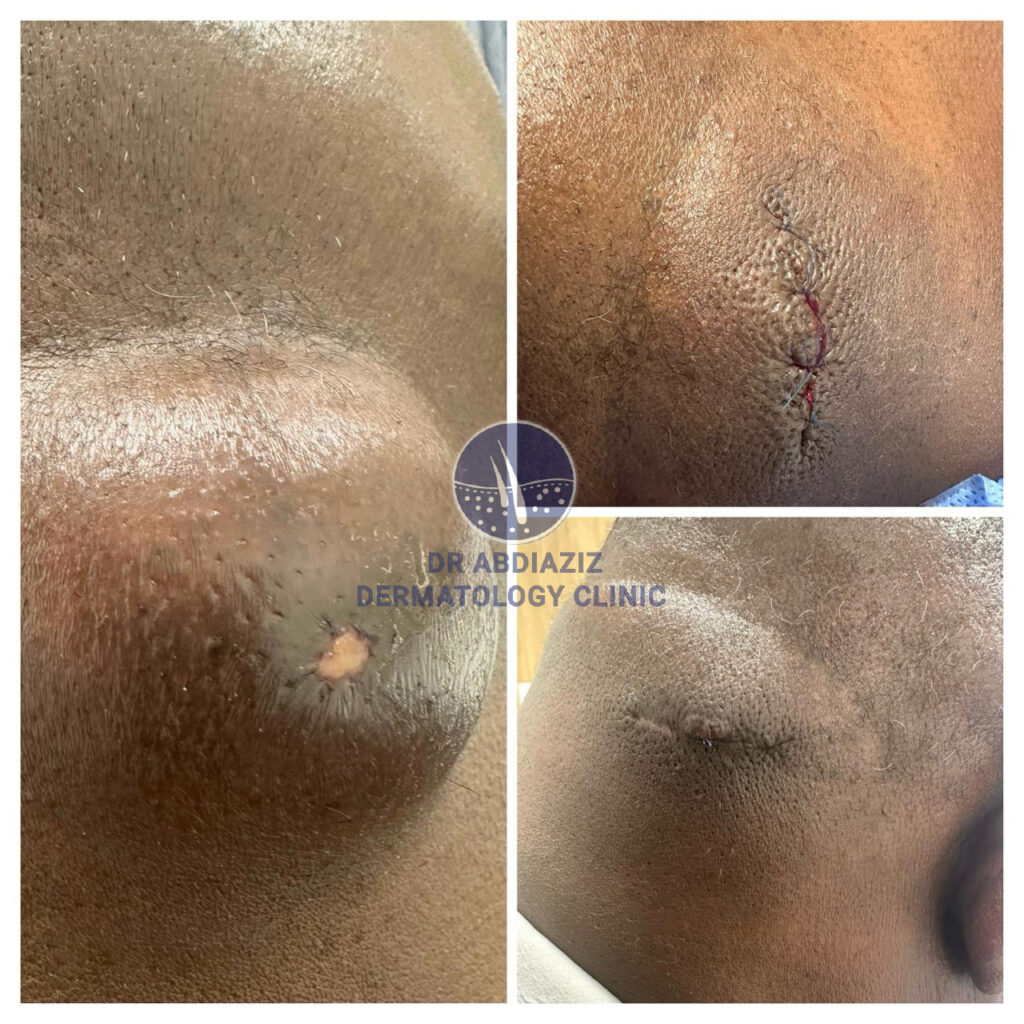An epidermoid cyst is a small, slow-growing, non-cancerous bump that forms beneath the skin. Commonly found on the face, neck, back, and genitals, these cysts develop when skin cells multiply instead of shedding, creating a sac filled with keratin—a protein that makes up the skin, hair, and nails. Epidermoid cysts are typically painless, though they may become inflamed, swollen, or uncomfortable if infected. While often harmless, some individuals choose to have them removed for cosmetic reasons or if they become problematic.
Types of Epidermoid Cysts
While there’s one primary type of epidermoid cyst, they can vary in appearance and location:
- Simple Epidermoid Cyst: The most common type, these cysts appear as firm, round bumps beneath the skin’s surface.
- Inflamed or Infected Cyst: Some epidermoid cysts can become red, swollen, and painful, especially if they rupture or become infected.
- Ruptured Cyst: A cyst that has burst under the skin, which may cause inflammation or discomfort and may require treatment.
Causes of Epidermoid Cysts
Epidermoid cysts form when skin cells, instead of shedding as they normally would, begin to multiply and grow beneath the skin. The main factors that contribute to the formation of these cysts include:
- Blocked Hair Follicles: Skin trauma or blocked pores can cause cysts to develop, as trapped skin cells accumulate in the follicle.
- Injuries to the Skin: Cuts or injuries may sometimes lead to the formation of cysts as the healing process may trap skin cells.
- Genetic Factors: Some people may have a genetic predisposition to developing epidermoid cysts, especially if conditions such as Gardner syndrome or basal cell nevus syndrome are present.
Treatment Options for Epidermoid Cysts
While epidermoid cysts are generally harmless, treatment may be recommended if the cyst becomes painful, infected, or cosmetically undesirable. Treatment options include:
- Observation: If the cyst is small, painless, and not infected, it may not require treatment and can simply be monitored.
- Incision and Drainage: A dermatologist may make a small cut and drain the cyst’s contents to relieve discomfort. However, this method may not prevent recurrence.
- Surgical Removal: Surgical excision is a more permanent solution, involving the complete removal of the cyst sac to prevent it from re-forming.
- Corticosteroid Injections: In cases of inflammation or infection, corticosteroids may be injected into the cyst to reduce swelling and alleviate pain.
If you have an epidermoid cyst and are considering treatment, consulting a dermatologist is the best way to understand the most suitable option for your individual case.

